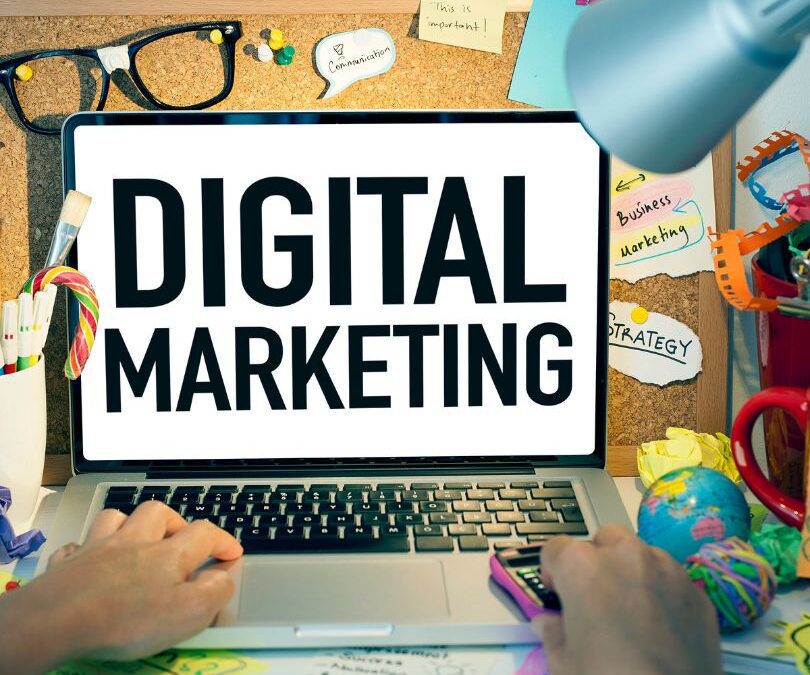
by John Heida | Jun 15, 2023 | SEO
Introduction
In today’s digital world, having a strong online presence is crucial for businesses of all sizes. One of the most effective ways to achieve this is by improving your website’s SEO (Search Engine Optimization) and search ranking. By optimizing your website for search engines like Google, you can increase its visibility in organic search results, drive more traffic to your site, and ultimately boost sales and revenue.
In this blog post, we will discuss some essential tips on how to improve your website’s SEO and search ranking. We’ll cover everything from keyword research to technical optimizations that can help you rank higher on Google and other search engines.
1. Conduct Keyword Research
Keyword research is the foundation of any successful SEO strategy. It involves identifying the words and phrases that people are using to find products or services similar to yours on search engines. By targeting these keywords in your content, you can increase the likelihood of appearing in relevant searches.
To conduct keyword research, start by brainstorming a list of potential keywords related to your business or industry. Then use tools like Google Keyword Planner, Ahrefs Keywords Explorer, or Moz Keyword Explorer to analyze their search volume, competition level, and relevance to your target audience.
2. Optimize Your On-Page Content
Once you have identified the right keywords for your website, it’s time to optimize your on-page content accordingly. This includes creating high-quality content that provides value to users while incorporating targeted keywords naturally throughout the text.
Here are some best practices for optimizing your on-page content:
- Include your primary keyword in the title tag, meta description, and URL of each page.
- Use relevant header tags (H1, H2, H3) to structure your content and include keywords where appropriate.
- Add internal links to other pages on your website that are related to the topic at hand. This helps search engines understand the context of your content and improves user experience by providing additional resources for users to explore.
- Optimize images by compressing them for faster load times and adding descriptive alt text with relevant keywords.
3. Improve Your Website’s Technical SEO
Beyond optimizing your content, it’s essential to address any technical issues that may be hindering your website’s search ranking performance. Some key aspects of technical SEO include:
- Site speed: A slow-loading website can negatively impact both user experience and search rankings. Use tools like Google PageSpeed Insights or GTmetrix to analyze your site’s loading speed and implement recommended optimizations such as enabling compression, minifying CSS/JavaScript files, and leveraging browser caching.
- Mobile-friendliness: With more than half of all web traffic coming from mobile devices, having a mobile-friendly website is crucial for SEO success. Test your site’s mobile compatibility using Google’s Mobile-Friendly Test, and make any necessary adjustments to ensure a seamless browsing experience for users on all devices.
- Crawlability and indexability: Ensure that search engines can easily crawl and index your website by submitting an XML sitemap to Google Search Console, using robots.txt files to control access to certain pages, and fixing any broken links or 404 errors.
4. Build High-Quality Backlinks
Backlinks, or inbound links from other websites, are a crucial factor in determining your website’s search ranking. When reputable sites link back to your content, it signals to search engines that your site is trustworthy and authoritative in its niche.
To build high-quality backlinks for your website:
- Create valuable, shareable content that others will want to reference on their own sites.
- Reach out to influencers and industry experts for guest posting opportunities or collaborations.
- Promote your content through social media channels and online communities relevant to your target audience.
5. Monitor Your Progress and Adjust Your Strategy
Improving your website’s SEO and search ranking is an ongoing process that requires regular monitoring and adjustments. Use tools like Google Analytics, Google Search Console, or third-party platforms like Ahrefs or Moz Pro to track key performance metrics such as organic traffic, keyword rankings, bounce rate, and conversion rates.
By analyzing this data over time, you can identify areas of improvement in your SEO strategy and make informed decisions about which tactics are working best for your business.
Conclusion
In conclusion, improving your website’s SEO and search ranking involves a combination of keyword research, on-page optimization, technical improvements, backlink building, and ongoing analysis. By implementing these strategies consistently over time, you can increase the visibility of your site in organic search results and drive more targeted traffic to help grow your business.

by John Heida | May 29, 2023 | Political
Running for political office is a challenging endeavor, but it can be made easier with the right tools and resources. One of the most important things a campaign can do is to create a strong visual identity. This includes a logo, a website, and signage.
Logo
The logo is the face of the campaign. It should be simple, memorable, and visually appealing. The logo should also be consistent with the campaign’s message and branding.
Website
The website is the campaign’s online home. It should be easy to navigate and provide visitors with information about the candidate, the campaign, and the issues. The website should also include a way for visitors to donate to the campaign.
Signage
Signage is a great way to get the campaign’s message out to the public. Signs can be placed in high-traffic areas, such as near polling places and on busy streets. Signs should be eye-catching and easy to read.
Flyers
Flyers are a great way to reach a large number of people with the campaign’s message. Flyers can be distributed door-to-door, at events, and in public places. Flyers should be concise and easy to read.
In addition to a strong visual identity, campaigns also need to have a strong message. The message should be clear, concise, and easy to understand. The message should also be relevant to the voters.
Campaigns also need to have a strong team. The team should be made up of experienced and dedicated individuals. The team should be able to work together effectively and efficiently.
Running for political office is a challenging endeavor, but it can be made easier with the right tools and resources. By creating a strong visual identity, developing a clear message, and assembling a strong team, campaigns can increase their chances of success.
Here are some additional tips for creating a successful political campaign:
- Start early. The earlier you start planning your campaign, the more time you will have to get your message out and build support.
- Get organized. It is important to have a clear plan for your campaign. This plan should include a timeline, a budget, and a list of goals.
- Get involved in your community. One of the best ways to get to know your constituents is to get involved in your community. This could involve volunteering for local organizations, attending community events, or simply getting to know your neighbors.
- Be visible. People need to know who you are and what you stand for if they are going to vote for you. Make sure you are visible in your community and that you are getting your message out.
- Be positive. People are more likely to support a candidate who is positive and upbeat. Avoid negative campaigning and focus on your strengths and the issues that are important to your constituents.
- Be prepared to work hard. Running for political office is a lot of work. Be prepared to put in long hours and make a lot of sacrifices.
If you are willing to put in the hard work, you can run a successful political campaign and make a difference in your community. Partner with Silo Hill Media and let us take the design work off your hands!

by John Heida | Feb 1, 2023 | Digital Marketing, Reputation Management
Your business can wow potential clients with several favorable reviews. Reviews influence customers’ decisions more than most realize.
93% of people examine internet reviews before buying, and 58% would pay more for a product with good evaluations. The greatest reviews have 4.2 to 4.5 stars and praise your business. A good Google review is personal, specific, and at least four sentences long.
To appear in local searches, your business needed at least five reviews when you started building them. Google now shows ratings with little reviews. If your business has more good ratings, your Google review page will rank high in search results. However, not every business can get Google reviews. Google reviews require a verified Google Business Profile.
You cannot control exactly what your customers write in their reviews, but you can manage how accessible your review page is and if your business is eligible for reviews in the first place. Thus, Google’s rules and Terms of Service must be understood. These policies prohibit rewarding Google reviews. There are ways to get as many positive evaluations as possible without bribing.
Google review strategies
Ask for guidance if you’re just getting started with Google Reviews. Start with a trustworthy consumer who wants your firm to flourish. Ask prior vendors and partners. If you can leave a review in return, it will help both of you. Asking for reviews may seem scary, but 86% of customers will submit evaluations for businesses they frequent. Customers who like your service want you to succeed so you may keep serving them!
Asking familiar customers and partners for reviews will make venturing out easier. Don’t worry if you’re uncomfortable asking for reviews at first! You can also send clients surveys with links to your Google reviews site. They’ll already be giving input, so this is a fantastic time to keep talking.
You might also give customers business cards asking for reviews. Social media activity can also boost Google reviews. Your consumers will remember you and be more inclined to submit a review if they connect with your social media pages and digital material. Post a link to your Google review page and urge customers to leave a review. Share this content every couple months to reach more users. Other techniques to gain more Google reviews are small yet effective, such as the following:
Link your website to Google reviews.
Your website visitors are likely customers or potential customers. If you don’t link to your Google reviews page here, devoted customers may not leave favorable evaluations. You can also link your Google reviews page into your business website. Believe it or not, you do not have to be a coding genius to make this happen. Log onto your Google Business Profile, click “share,” then “embed post.” You can then copy the Header code and paste it between the HTML tags on the selected website page. Finally, your footer can add a “Google review” icon.
Promote your Google reviews via email.
When you require reviews, use your email database. You can send a single email promoting your Google review page or a whole email campaign. Being upfront about needing more reviews is fine as long as your email is appealing and informative. Even normal emails might be an opportunity to attract customers to your Google reviews page if you put the link in your signature!
Answer existing reviews!
Customer reviews must be addressed. 97% of reviewers read the business’s response. Responses reveal a lot about you. It shows clients you care about their experience and lets you demonstrate your customer service skills and make up for poor evaluations. Even well-oiled businesses get poor reviews, but how you handle them can make all the difference. Respond promptly, specifically, and politely to all reviews. Make it easy for customers to contact you if you can offer them more!
Google reviews are a marathon. Steps like the ones above will help you reach 2000 reviews, but it will take time. Maintain excellent client service. Their expertise will reflect through in their reviews and your overall success.
Silo Hill Media is a leader in small business SEO and Google reviews since we specialize in digital marketing. We are located in the greater Boise area and work with small businesses throughout the United States.

by John Heida | Jan 25, 2023 | Coaching, Digital Marketing, Social Media, Video Marketing, Website Design
Print advertisements and other traditional forms of advertising are losing effectiveness as the world gets more digital. While print advertising has long been a mainstay for companies, digital advertising has supplanted it as the most effective way to reach consumers. Digital advertising is displacing print advertising for a number of reasons, and small firms must adopt it if they want to remain competitive.
First, compared to print advertising, digital advertising is far more economical. By using digital advertising, businesses can reach a much larger number of people for a small fraction of the cost of a print ad. For small firms, which frequently have constrained advertising resources, this is particularly crucial. Additionally, digital advertising enables more exact targeting, allowing companies to target their specific market.
Second, comparing digital and print advertising, the latter is simpler to quantify. With digital advertising, companies can monitor the effectiveness of their campaigns in real time and make changes as necessary. Companies can’t tell if their print ads are reaching their target audience and having an effect, which makes it hard for them to know if they are working.
Third, digital advertising enables increased client engagement. Real-time interaction between businesses and customers is made possible by social media platforms like Facebook and Instagram, which can increase brand loyalty and repeat business. Additionally, video advertising enables companies to express their narrative in a more captivating and dynamic manner, which may assist to forge a closer bond with customers.
Small businesses must use digital advertising, including that found on websites, social media, and video, in order to remain competitive. In today’s digital environment, a website is a requirement for any business. Customers can readily find businesses online because to the platform it gives them to advertise their goods and services. For businesses to connect with customers and create communities, social media sites like Facebook and Instagram are also crucial. Businesses can use video advertising to present their goods or services in an exciting style and to convey their narrative in a more compelling way.
Digital advertising is replacing print advertising because it is cheaper, easier to track, and more interesting. Small businesses need to use digital marketing methods like websites, social networking, and video ads to stay competitive. By doing this, businesses will be able to connect with more people, gauge the effectiveness of their efforts, and forge closer relationships with their clients. Silo Hill Media is a digital marketing company in Boise that does all of these things and more. Silo Hill Media also offers a consulting service in the form of coaching to small businesses that prefer to do their own marketing but do not know where to begin.

by John Heida | Jan 24, 2023 | Website Design
In today’s digital world, having a business website is crucial since it acts as an online representation of a firm and enables enterprises to reach a bigger audience. A website serves as an online storefront, giving visitors access to details about goods and services as well as a means of placing orders or making appointments. A website can also give a platform for growing and interacting with a consumer base, as well as help a company create trust and authority.
But simply having a website is insufficient. To remain relevant with search engines and draw in more clients, businesses must constantly update and maintain their website. Complex algorithms are used by search engines like Google to assess a website’s relevance and authority. These algorithms consider the website’s content, the number of links referring to it, the site’s general design, and the user experience.
Businesses may increase their traffic by constantly updating their websites with new, high-quality content and advertising that content through social media and other channels. This will help them rank better in search engines and gain more backlinks. Additionally, by consistently enhancing the website’s user interface and design, you can make sure that search engines and potential clients will find the site to be relevant and easy to use.
In conclusion, a company website is an essential tool for expanding your audience, establishing your authority and reputation, and attracting and retaining customers. However, in order to remain relevant with search engines and draw in new customers, it is crucial for businesses to regularly update and maintain their website. Businesses may raise their search engine ranks, attract more visitors to their website, and ultimately boost their chances of success by updating their website frequently with new information, advertising that content, and continuously improving the website’s design and user experience.





